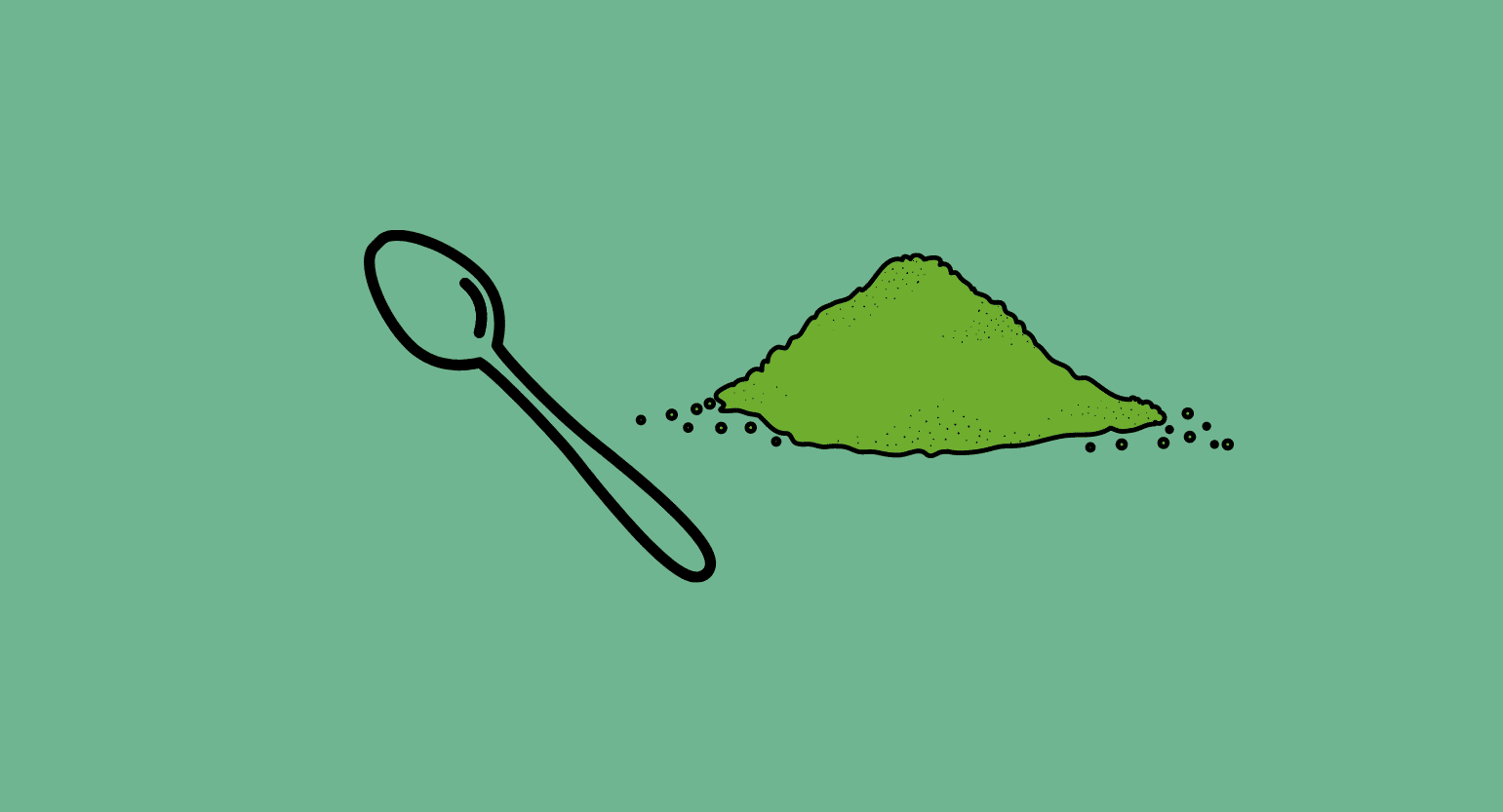Best Kratom Strains for Pain Relief
Pain serves an important function in the body — it warns us when something is wrong and reminds us to be careful with parts of the body that have been injured. However, too much pain, or pain signals that persist for too long, can become problematic.
Part of kratom’s popularity is due to its ability to reduce many kinds of pain — but you can’t use just any kratom.
There are dozens of different versions (kratom strains) — each with its own characteristic effect profile. Some kratom strains are more relaxing; others are more stimulating.
Some are strong painkillers; others are better euphoriants and mood enhancers.
Kratom can be divided into three main categories according to the color of the leaf veins:
- Red vein kratom — these strains are considered to have the strongest painkilling benefits
- Green vein kratom — these strains offer painkilling effects but with less intensity than red-vein
- White vein kratom — these strains are more stimulating & nootropic; they’re less useful for managing pain
Let’s cover the three strains most people use to manage pain:

1. Red Maeng Da Kratom
Maeng Da kratom is the most popular strain for pain relief during the day since it’s less sedating than other reds. You can find Maeng Da in red, green, and white varieties. All three are useful for pain, but the red version is the strongest overall.
Red Maeng Da is very potent, so it’s a good idea to start with a lower dose than you think you need and increase it only when you’re familiar with how your body will respond.
Benefits of Maeng Da Kratom:
- Potent analgesic action
- Alleviates feelings of stress & anxiety
- Less sedating than other red strains
→ Find This Strain at Kona Kratom

2. Red Bali Kratom
Red Bali kratom is one of the more popular options for chronic or severe pain.
Most red vein kratom strains are a stronger sedative — making their effects undesirable for use during the day. Red Bali is a great choice for improving sleep and does an incredible job of reducing pain.
Benefits of Red Bali Kratom:
- Improves sleep quality
- Moderate analgesic action
- Reduces stress & anxiety
→ Find This Strain at VIP Kratom

3. Red Borneo Kratom
This is an excellent all-arounder in terms of alleviating pain and helping offset the dose of prescription pain medications (with your doctor’s approval, of course).
Red Borneo is one of the most popular kratom options worldwide. It has a great balance of potent painkilling activity while also having a much lower chance of causing side effects compared to other strains.
The only downside to this strain is that not all red Borneo is consistent. We found the Kona Kratom Red Borneo was roughly 50% stronger than the Kraken Kratom sample we tried. It seems not all Red Borneo is created equal, so make sure you order from a reputable source.
Benefits of Red Borneo Kratom:
- Moderate analgesic action
- Alleviates symptoms of withdrawal
- Improves the quality & duration of sleep
- Lower chance of producing side effects
→ Find This Strain at Kona Kratom
What’s the Best Dose of Kratom for Pain?
Kratom can be divided into two dosages — low dose and high dose.
Low-dose kratom — up to 5 grams of powder — is stimulating and shares a lot in common with coffee — a closely related species of plant.
Higher doses have a completely different effect. They’re more relaxing, sedative, euphoric, and analgesic. Most people use this amount to help manage chronic pain.
The standard dose of kratom for managing pain is 5–10 grams.
For a more detailed breakdown of what dose to use — check out our kratom dosage calculator.
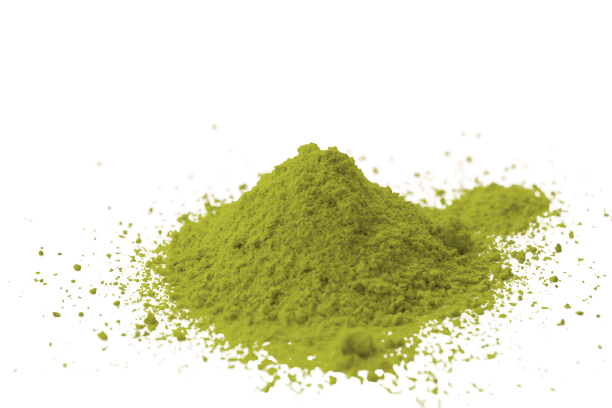
How Does Kratom Work for Pain?
There are a ton of anecdotal reports of people using kratom to manage their pain — millions of people in the United States use it on a regular basis [1].
Scientific research is limited, but take a glimpse at how kratom works and go into more detail in the following section.
Kratom helps alleviate pain through a few key mechanisms, and possibly others beyond this:
- It stimulates the opioid receptors, which act as a gateway for pain signals heading toward the brain
- It inhibits COX-2 — which is an enzyme that creates inflammatory messengers that cause pain
- It relaxes the muscles to alleviate muscle-related pain & tension
1. Kratom & Opioid Receptors
The primary painkilling effect of kratom comes down to its effects on the opioid receptors. This is the same mechanism of action used by prescription pain medications like morphine, Dilaudid, or OxyContin.
However, kratom is not an opioid. It’s actually considered an atypical opioid because it works on other receptors beyond the opioid system — which also makes it much safer [11]. We’ll go into more details below.
The opioid receptors are located throughout the spinal cord and brainstem and are a gateway for pain signals.
The body actively controls the amount of pain it experiences using a group of compounds called endorphins (natural opioids).
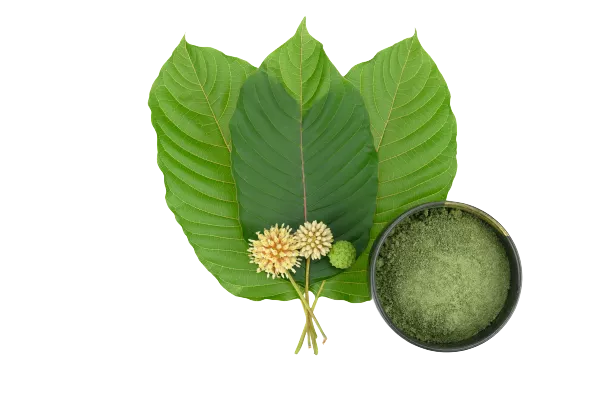
How the Opioid Receptors Work
The source of the pain signal is generated at the source of an injury in the body — such as an inflamed joint, irritated section of the digestive tract, or other injuries. Specialized sensors called nociceptors detect damage in the region and send an electrical signal to the spinal cord.
Some of the nerve signals in the spinal cord have opioid receptors on the outside of the cell. In order to control the pain signal reaching the brain, compounds such as endorphins are released to activate these receptors.
Once activated, the opioid receptors stop the nerve cell from passing the signal along — effectively stopping the signal from reaching the brain and reducing the sensation of pain.
The more opioid receptors that are activated, the weaker the pain signal becomes.
2. Kratom & Other Pain Pathways
Kratom’s influence on the opioid receptors is its biggest reason for pain relief, but it acts on other pathways that could prove to be significant.
Kratom As An Anti-Inflammatory
Research shows mitragynine, kratom’s main alkaloid, inhibits COX-2 mRNA expression, which reduces prostaglandin E(2) production [13]. Interestingly, its effects on COX-1 are insignificant.
COX-2 inhibitors are a type of non-steroidal anti-inflammatory drug (NSAID) used to treat pain and inflammation. These cause fewer gastrointestinal problems than NSAIDs that inhibit both COX-1 and -2.
Research suggests kratom might also have anti-inflammatory effects through the transient receptor potential cation channel subfamily V member 1 (TRPV1) [12]. These are non-opioid receptors in the pain pathway.
Kratom As A Muscle Relaxant
Mitragynine and kratom extract were studied for their effect on muscles, and the extract had greater muscle-relaxant effects, suggesting there’s a synergistic effect with kratom’s other alkaloids.
Mitragynine doesn’t appear to be an acetylcholine antagonist but instead works primarily at the neuromuscular junction, the synaptic connection between the end of a motor nerve and a muscle. [15]
Kratom for Pain: What the Research Says
As the interest in kratom grows, so do the number of studies on it. The last five years alone have given us a lot of data to sort through — too much to list here. However, we do have an article dedicated to kratom research if you want to learn more.
A 2023 review of the available research on kratom and its alkaloids concluded that kratom is generally safer than opioids and could be useful for treating mood disorders, addiction, and pain — and it warrants “a significant investment of rigorous basic and clinical research.” [11]
Research on Kratom & Pain Tolerance
A randomized, double-blind study explored the effects of kratom on pain tolerance [10]. The study showed a significant increase in pain tolerance 1 hour after drinking a kratom decoction. Pain tolerance remained unchanged in the placebo control group.
Kratom & User Experience: Anecdotal Evidence
One study gathered data from over 7,000 users; only 5,152 responses were valid responses. Most people used kratom to self-treat pain (73%) or mental health conditions (42%). Gastrointestinal side effects were most common, but at high or frequent doses — over 5 grams or more than 22 doses a week [1].
An earlier survey of 3,024 people found that most participants (48%) said the primary reason for using kratom was to manage pain. Only 13% of the study participants noted adverse side effects and only 0.8% stopped using the herb due to adverse effects.
As many as 10% of the study respondents reported their motivation for using the herb was to cut down on opioid use or alleviate symptoms of withdrawal. The vast majority of participants using kratom for opioid withdrawal (90%) reported the herb was effective for both reducing pain and easing withdrawal symptoms. [5]
Research on Kratom’s Alkaloids
There are at least 50 different alkaloids in the kratom plant — each one with its own distinct set of effects. Research has just begun, and have limited information on only a small number of them, though they all show great potential so far:
- Akuammine
- Speciophylline
- Spciociliatine
- Mitraversine
- Rynchophylline
- Isorhynchophylline
- Daucosterol
- Iso mitraphylline
- Mitraphylline
- Corynoxine
- Ciliaphylline
Of these compounds, there are two that contribute the lion’s share of the painkilling effects from the plant — mitragynine, which can make up to 60% of the alkaloid content, and 7-hydroxymitragynine, which usually makes up less than 2% [19].
Dozens of in-vitro and animal studies have shown promise for the use of kratom and its alkaloids:
- Mitragynine stimulates the opioid receptors in-vitro (nociceptive) [6]
- Mitragynine & 7-hydroxymitragynine block pain by activating both the delta and mu-opioid receptors in vivo [7]
- 7-hydroxymitragynine blocks pain by activating the mu-opioid receptors [8]
- Alkaloid extracts increased pain-response latency in mice [9]
- Mitragynine shows anti-inflammatory effects and pain-reducing capabilities through non-opioid pathways, mostly TRPV1 receptors [12]
- Cannabinoids might increase mitragynine’s efficacy in treating neuropathic pain [14]
- Mitragynine shows high permeability of the blood-brain barrier (BBB) and slow clearance; both are an advantage for pain relief and opioid withdrawal [16]
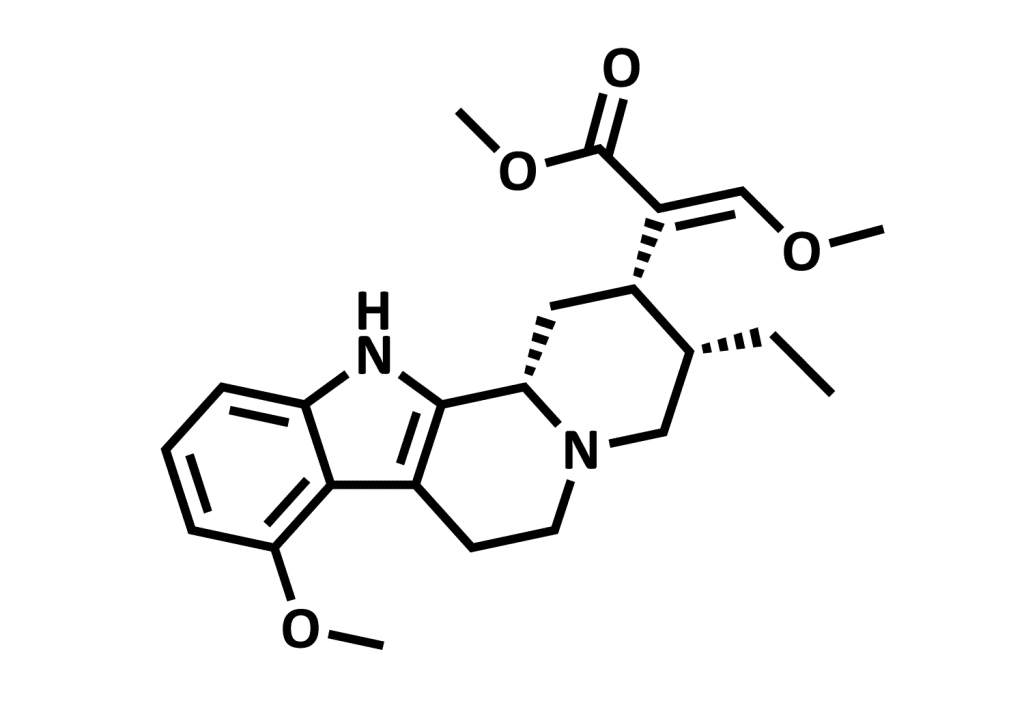
Mitragynine
Mitragynine is the primary alkaloid in the kratom plant — in some samples, it makes up over 65% of the total alkaloid content.
This compound is a strong opiate receptor agonist yet shares no structural similarities with other known opioids.
Mitragynine specifically binds to the mu-opioid receptors involved in regulating pain, stress, sleep, respiration rate, blood pressure, and mood. Activating these receptors blocks the transmission of pain before it reaches the brain, but it also contributes to the relaxing and euphoric effects.
This compound has also been shown to inhibit COX (cyclooxygenase) — which is the primary mechanism of action used by aspirin to stop pain and inflammation.
Mitragynine binds to lots of other receptors as well, which is what makes the effects so diverse and widespread. It’s also been shown to bind to the adrenergic, 5HT1A (serotonin), dopamine, GABA, NMDA, and norepinephrine receptors.
7-Hydroxymitragynine
7-hydroxymitragynine is the second most abundant alkaloid in most kratom samples.
This is the plant’s primary painkiller, which has been shown to be up to 13 times more potent than morphine, and 36 times more potent than mitragynine. Some studies suggest this alkaloid binds to the mu, kappa, and delta-opioid receptors [2].
Even though it’s possibly more potent than morphine, this doesn’t mean it’s as dangerous. Kratom has negligible amounts of this alkaloid — enough for pain relief but not enough to be that problematic.
Kratom vs. Prescription Pain Medications
Kratom is often used as an alternative to prescription pain medications. It works through the same mechanisms (mu-opioid receptor agonism) and provides a similar level of relief — which is why so many people use it to help wean themselves off prescription opiate medications or illicit drugs like heroin. The activity of kratom alkaloids at the opioid receptors helps alleviate symptoms of withdrawal and curb cravings.
Because of these similarities, many people are afraid kratom is also just as addictive and problematic. Some states and countries have banned kratom, even adding it as a Schedule I substance, like cocaine and heroin.
Let’s look at the facts and see how kratom compares to opioids and other pain medications.
Key Differences: Kratom vs. Prescription Pain Meds
| Comparison Metrics | 🍃 Kratom | 💊 Prescription Opiates |
| Effects On Pain | Moderate to strong pain-relief | Strong pain-relief |
| Overdose Potential | Very unlikely to cause overdose | Moderate to high chances of overdose (depending on the substance) |
| Potential for Addiction | Mild to moderate | Moderate to high potential for addiction |
| Mechanism of action | • Mu, delta, & kappa-opioid receptor agonism • Dopaminergic & serotonergic effects • NMDA agonist • GABAergic effects • Adrenergic receptor agonist | • Mu-opioid receptor agonist |
| Requires Prescription? | No | Yes |
What Makes Kratom Safer Than Prescription Opiates?
If kratom and prescription opiates have the same effect on pain and target many of the same receptors, why is kratom the safer option? Don’t they both have the same potential for risk?
No, they don’t carry the same risks.
1. It’s Physically Difficult to Take Too Much
First of all, it’s very difficult to overdose on kratom. You have to take this herb orally. If you take much, you’ll feel extremely nauseous and start throwing up long before it reaches toxic levels.
People don’t usually take super-high doses of kratom simply because it’s very uncomfortable. You only use as much as you need and nothing more. The same can’t be said for pharmaceuticals. You can keep taking them — going deeper and deeper without feeling the same nauseating side effects.
2. Kratom Acts On Multiple Systems
Other mechanisms in kratom reduce the risk even further. Kratom is considered a “dirty drug.” This isn’t a negative sentiment in any way — it refers to the specificity of the active ingredients.
Instead of activating just one receptor type — like most pharmaceutical painkillers — kratom activates many different receptors (making it an atypical opioid, as we said).
It targets the opioid receptors to block pain, but it also targets serotonin, dopamine, glutamate, GABA, and adrenergic receptors too. This gives kratom a much broader range of benefits, but it also spreads the effects over several different systems in the body. Some of these effects actually help to reduce the risk of overdose and tolerance.
3. Kratom Seems to Block the Cause of Respiratory Depression
Kratom also appears to block the activation of a compound called beta-arrestin-2 [2], a compound that’s activated by conventional opiate medications and is what causes respiratory depression — the primary cause of death during an overdose.
4. Kratom is Less Addictive & the Withdrawal Symptoms Are Less Severe
Research is steadily increasing in this area — kratom’s addiction potential is one of the biggest reasons people are afraid of it. We dedicated a whole section to it below, so continue reading if you want to know what the studies show. Hint: kratom addiction can be avoided and isn’t nearly as severe as opioid or other addictions.
The World Health Organization (WHO) reviewed kratom in 2021 and said it is not a threat to public health and did not recommend banning or scheduling it. Why governments continue to do so or haven’t reversed their laws is another topic and a question we should all ask.
Related: Opioid Addiction Facts & Statistics
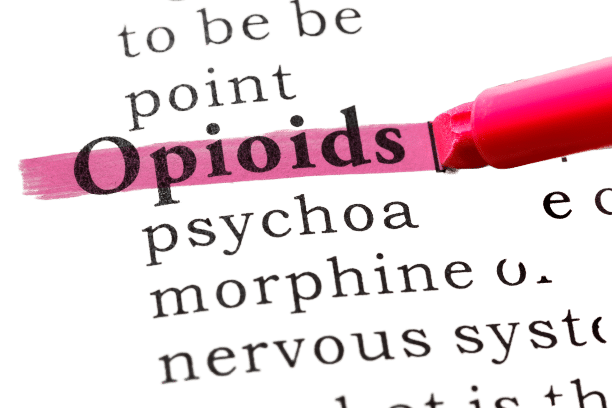
Is Kratom Addictive?
This is one of the biggest concerns people have when using kratom. I’m not going to sit here and tell you kratom is not addictive — because it certainly can be. However, research continues to show that kratom is significantly less addictive than the alternatives.
Researchers recently (2023) published a review of over 100 studies — all from the past five years — on kratom addiction and withdrawal [20].
Here are some of their conclusions:
- Even moderate or heavy kratom use doesn’t always produce withdrawal; many long-term, heavy users never experience it
- Kratom has alpha-adrenergic effects similar to non-opioids clonidine and lofexidine, which are used to treat opioid withdrawal, suggesting its effectiveness isn’t all due to its opioid-like behavior
- Taking 2 g of natural kratom powder 1-2 times a day did not lead to withdrawal; using 3 g more than twice a day for a long period was more likely to
- Kratom withdrawal was more likely among those with a history of opioid use
- Kratom withdrawal symptoms were similar to those of opioid withdrawal but milder, tolerable, and self-manageable — methadone and buprenorphine should not be the first-line treatments
- Withdrawal seemed to occur with high mitragynine intake — which is why it’s important to use extracts carefully
Virtually any substance (herbal and pharmaceutical alike) can be addictive. In its essence, addiction is a physiological and psychological attempt to find release from discomfort. The line between therapy and addiction is drawn when a substance begins to have a clear negative impact on your life — but you continue to use the substance anyway.
Painkillers have a very high affinity for causing addiction because they provide release from a visceral form of discomfort — chronic pain.
Kratom is a powerful painkiller and gives feelings of euphoria, so it’s very easy to see how someone may become addicted to its effects. If you’re in constant pain and discomfort, your body is going to want to perform whatever action that manages to remove it.
Despite the potential for addiction, many people turn to kratom to manage their pain because it’s significantly less addictive than prescription opiates like OxyContin, codeine, Demerol, Dilaudid, Percocet, and others. Nearly 10% of people prescribed opiate painkillers will become addicted.
These substances are dangerous too. In 2022, 82,998 people died from an opioid overdose — and the numbers tend to rise every year.
The high potential for addiction and death from an overdose on prescription medications is one of the primary reasons people turn to kratom. While the risk of addiction to this herb is genuine, it’s considered much safer overall.
It’s also much easier to avoid or escape the grips of addiction since kratom’s withdrawal symptoms don’t compare to opioid withdrawal symptoms — they are much milder and easier to overcome.
Related: How to Quit Kratom
How Is Kratom Less Addictive?
Some theories suggest kratom’s lower potential for addiction comes from its ability to bind to the kappa-opioid receptors — which is a subtype of the opioid pain receptors. Most prescription medications are specific to the mu-opioid receptors only.
Activation of the kappa opioid receptors could explain the dysphoria and reduced potential for addiction from kratom compared to conventional mu-opioid agonists [3]. The research here is still in the early stages, so we can’t be certain about this.
Another reason could be how mitragynine affects dopamine levels. One 2022 study compared how mitragynine, morphine, and methamphetamine increased dopamine and two of its metabolites — 3,4-dihydroxyphenylacetic acid (DOPAC) and homovanillic acid (HVA) — to look at kratom’s addiction potential [17].
Morphine and methamphetamine significantly increased extracellular dopamine levels, but mitragynine did not. Instead, it increased dopamine’s metabolites, whereas methamphetamine and morphine only moderately impacted them. This suggests mitragynine has a strong and long-lasting impact on dopamine metabolism but not on extracellular activity, which would reduce the risk of addiction.
Kratom Dependency & Tolerance
It’s fairly easy to avoid building a tolerance to kratom by taking occasional breaks from it, though this can be hard to do if you’re managing pain or withdrawal symptoms.
The desire to use kratom to escape pain and discomfort is considered a form of psychological (behavioral) addiction. This type of addiction is easy to escape because the only consequence of avoiding the herb is that your pain comes back.
Long-term use of kratom can lead to dependency, tolerance, and a more severe form of addiction (physical addiction).
It takes several months of consistent use to get to this point. You’ll find the dose you need to take to get the same level of benefit gradually becomes higher and higher. If you skip a dose, you may feel other side effects like muscle shakes, anxiety, low mood, and pain.
This tolerance and dependency can be reversed, but it involves gradually weaning off the substance until the body no longer needs it to maintain homeostasis (balance). This is called detoxing. The side effects you experience when a dose of kratom is skipped are called withdrawal.
Related: How to Deal with Kratom Withdrawl
What Are the Signs of Kratom Addiction?
- You require a very high dose of kratom to feel the desired effects
- You feel physically ill when you’re not using kratom
- You constantly think about using kratom
- You’ve lost motivation for other responsibilities such as work, school, or housework
- You’ve become isolated from friends or family
How to Avoid Becoming Addicted to Kratom
There are no good or bad substances — there are just chemicals that exist. It’s our relationship with them that can be good or bad.
The best way to avoid becoming addicted to kratom is to maintain a healthy relationship with it.
This means understanding that your primary focus should be the cause of your pain. Don’t rely on the substance as a crutch to give you a means of escape from your discomfort. Take steps to identify what’s causing it and learn how to manage it by removing the source.
This could involve physical steps like stretching, avoiding a certain sport or activity for a while to let the body recover, using heat or cold therapy, visiting a physiotherapist, or focusing on rehabilitation of a damaged muscle or joint.
It could also mean more metaphysical changes — like dialing in your habits and routines, finding sources of internal motivation, and working on your mindset. All of these things have a more significant impact on chronic pain than you might expect.
Kratom is a tool to help improve your quality of life and take the edge off while you work on these other aspects of your health in the meantime. No substance should be used in perpetuity for managing pain.
It also helps to avoid using kratom every day if you can. Even scheduling just one or two days per week or one week a month where you don’t use any kratom at all can go a long way in avoiding dependence and addiction.
Side Effects of Kratom
Any substance — natural or synthetic — that has a strong impact on the body will inherently bring some risk of side effects. Nothing is side-effect-free. The key is to balance the risk to reward of using these substances and take steps to mitigate the potential side effects as much as possible.
Side effects of kratom include:
- Dizziness
- Itchiness
- Lethargy & fatigue
- Loss of muscle coordination
- Low libido
- Nausea & vomiting
- Poor appetite
The trick is to find the dose that gives you the effects you’re looking for — and stop there. The chances of experiencing side effects increase exponentially the more you take. If 8 grams is sufficient for alleviating your pain, there’s no reason to take any more, and you’ll only open yourself up to side effects by doing so.
The most common side effect when using kratom for pain is a syndrome called kratom wobble. This involves a combination of dizziness, loss of muscle coordination, and nausea. It can be quite uncomfortable and is well worth trying to avoid.
Sedation, lethargy, headaches, and grogginess aren’t uncommon either.
Learn more about the potential side effects of kratom & what you can do to prevent them.
Related: Kratom Dosage Guide
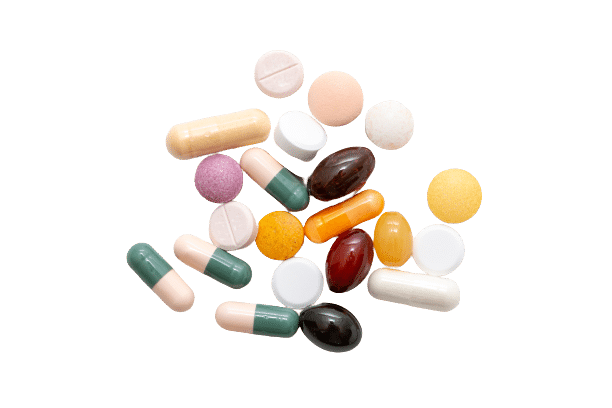
Will Kratom Mix With My Medications?
Never mix kratom with another medication, whether it’s herbal, prescription, over-the-counter, or illicit.
Many people who turn to kratom to help manage pain are already using other medications. If you’re taking other pain medications, always check with your doctor before using kratom. They can double-check that the kratom isn’t going to interact with your current medications.
The most concerning combinations are with other opiate drugs. Mixing kratom with opiate drugs like fentanyl, codeine, OxyContin, Dilaudid, and Percocet, can increase the chances of overdose because they act on the same receptors in the body.
Other interactions can occur as well — primarily revolving around competition for liver metabolism with kratom and other drugs.
Everything we take into the body is eventually metabolized by the liver. A series of enzymes in the organ are tasked with disassembling or altering the chemical structure of molecules in our blood to help eliminate them from the body. These enzymes are referred to as the CYP450 isoenzymes.
If two or more compounds require the same enzymes for metabolism, it can slow the process down. If there’s too much competition, the active ingredients can begin to build up in the body. The effects may last longer than you expect or act too strongly on the body — leading to side effects.
Kratom is primarily metabolized by the CYP2C9, CYP2D6, CYP1A2, and CYP3A4 enzymes [4]. Many other medications or substances require the same enzymes for metabolism and may therefore be affected by kratom — such as antacids, grapefruit juice, dextromethorphan, and watercress.
Substances that inhibit CYP3A can cause both mitragynine and 7-hydroxymitragynine to have more potent effects on the mu-opioid receptors, leading to a potentially dangerous interaction. Research suggests that 7-hydroxymitragynine becomes a metabolite of mitragynine through some other route, which would have further implications for drug interactions [18].
Care should also be taken with drugs with a narrow therapeutic index — such as warfarin. The difference between a dose that’s effective compared to doses that are potentially dangerous is very small. Even slight alterations in how the body metabolizes this drug can lead to more serious problems.
The bottom line here is that you can mix kratom with other medications — but you should always speak with your doctor first to make sure it’s safe. They may choose to alter your dose of medicines or advise you to take kratom at least 2 hours apart from your other medications.
Related: Exhaustive List of Kratom Drug Interactions: (260+ Medications)
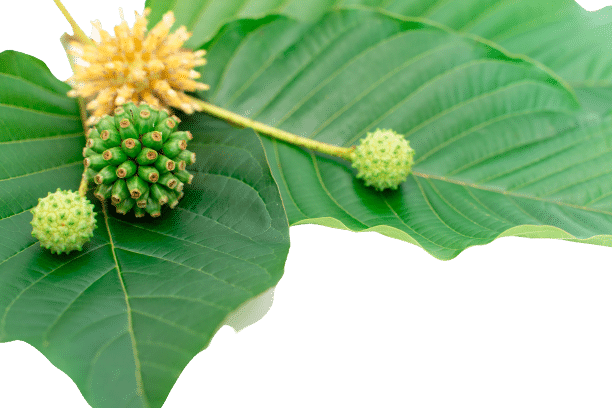
Resources On Kratom & Different Kinds of Pain
We have an ever-growing database of information on pain and how to treat different ailments. Feel free to check out these articles for more detailed information:
- How to Use Kratom for Chronic Back Pain
- Bad Posture & Chronic Pain: How They’re Connected & What to Do About It
- Managing the Pain of Childbirth: What to Expect
- Knock Out Muscle Pain With Kratom
- Does Kratom Work for Nerve Pain (Neuralgia)?
- List of 23 Natural Pain Relievers for Chronic Pain
- Is Kratom the Answer to Gout Pain?
- Kratom vs. CBD: Which is Better for Pain & Sleep?
- Chronic Pain Statistics: You’re Not Alone
- Can Caffeine Make Painkillers More Effective?
- The Ugly Truth About Chemo Pain & What to Do About It
- Pain Is Pain, Right? Wrong. Here Are 10 Types of Pain & How to Manage Them
- In Pain? Sometimes You Shouldn’t “Suck It Up”
- Acute Pain vs. Chronic Pain: What’s the Difference & Does It Matter?
Final Thoughts: Using Kratom for Pain
Kratom has many health benefits — but nothing compares to its ability to stop pain.
The active ingredients are a group of over 40 alkaloids — many of which target the same receptors leveraged by prescription pain medications like OcyContin or Dilaudid. This gives kratom a robust analgesic effect comparable to even the strongest prescription pain pills on the market.
Other compounds in kratom reduce the chances of serious side effects and addiction — which are major problems with prescription pain management techniques today.
While kratom can still be addictive, just like any other painkiller, it’s been proven many times to be far less problematic than the alternatives. Many people even use kratom to help wean themselves off prescription or illicit opiates.
With that said, always consult your doctor before using kratom to manage your pain — especially if you have any underlying health issues or are using other medications of any kind.
- Grundmann, O., Veltri, C. A., Morcos, D., Knightes III, D., Smith, K. E., Singh, D., … & Swogger, M. T. (2022). Exploring the self-reported motivations of kratom (Mitragyna speciosa Korth.) use: a cross-sectional investigation. The American Journal of Drug and Alcohol Abuse, 48(4), 433-444.
- Prozialeck, W. C., Jivan, J. K., & Andurkar, S. V. (2012). Pharmacology of kratom: an emerging botanical agent with stimulant, analgesic, and opioid-like effects. The Journal of the American Osteopathic Association, 112(12), 792-799.
- Narita, M., Funada, M., & Suzuki, T. (2001). Regulations of opioid dependence by opioid receptor types. Pharmacology & therapeutics, 89(1), 1-15.
- Warner, M. L., Kaufman, N. C., & Grundmann, O. (2016). The pharmacology and toxicology of kratom: from traditional herb to drug of abuse. International journal of legal medicine, 130(1), 127-138.
- Coe, M. A., Pillitteri, J. L., Sembower, M. A., Gerlach, K. K., & Henningfield, J. E. (2019). Kratom as a substitute for opioids: results from an online survey. Drug and alcohol dependence, 202, 24-32.
- Watanabe, K., Yano, S., Horie, S., & Yamamoto, L. T. (1997). Inhibitory effect of mitragynine, an alkaloid with analgesic effect from Thai medicinal plant Mitragyna speciosa, on electrically stimulated contraction of isolated guinea-pig ileum through the opioid receptor. Life sciences, 60(12), 933-942.
- Babu, K. M., McCurdy, C. R., & Boyer, E. W. (2008). Opioid receptors and legal highs: Salvia divinorum and Kratom. Clinical toxicology, 46(2), 146-152.
- Matsumoto, K., Mizowaki, M., Suchitra, T., Takayama, H., Sakai, S. I., Aimi, N., & Watanabe, H. (1996). Antinociceptive action of mitragynine in mice: evidence for the involvement of supraspinal opioid receptors. Life Sciences, 59(14), 1149-1155.
- Read Mongkol, W., Keawpradub, N., & Sawangjaroen, K. (2007). Effects of the extracts from Mitragyna speciosa Korth. leaves on analgesic and behavioral activities in experimental animals. Songklanakarin J. Sci. Technol, 29(Suppl 1), 39-48.
- Vicknasingam, B., Chooi, W. T., Rahim, A. A., Ramachandram, D., Singh, D., Ramanathan, S., … & Jaworski, M. C. (2020). Focus: Plant-based Medicine and Pharmacology: Kratom and Pain Tolerance: A Randomized, Placebo-Controlled, Double-Blind Study. The Yale Journal of Biology and Medicine, 93(2), 229.
- Smith, K. E., Grundmann, O., Swogger, M. T., & Garcia-Romeu, A. (2023). Kratom (Mitragyna speciosa): Pharmacology and Use of a Naturally Occurring Atypical Opioid.
- Mat, N. H., Bakar, S. N. S., Murugaiyah, V., Chawarski, M. C., & Hassan, Z. (2023). Analgesic effects of main indole alkaloid of kratom, mitragynine in acute pain animal model. Behavioural Brain Research, 439, 114251.
- Utar, Z., Majid, M. I. A., Adenan, M. I., Jamil, M. F. A., & Lan, T. M. (2011). Mitragynine inhibits the COX-2 mRNA expression and prostaglandin E2 production induced by lipopolysaccharide in RAW264. 7 macrophage cells. Journal of Ethnopharmacology, 136(1), 75-82.
- Farkas, D. J., Inan, S., Heydari, L. N., Johnson, C. T., Zhao, P., Bradshaw, H. B., … & Rawls, S. M. (2023). Cannabinoid mechanisms contribute to the therapeutic efficacy of the kratom alkaloid mitragynine against neuropathic, but not inflammatory pain. Life Sciences, 121878.
- Chittrakarn, S., Keawpradub, N., Sawangjaroen, K., Kansenalak, S., & Janchawee, B. (2010). The neuromuscular blockade produced by pure alkaloid, mitragynine and methanol extract of kratom leaves (Mitragyna speciosa Korth.). Journal of ethnopharmacology, 129(3), 344-349.
- Kong, W. M., Mohamed, Z., Alshawsh, M. A., & Chik, Z. (2017). Evaluation of pharmacokinetics and blood-brain barrier permeability of mitragynine using in vivo microdialysis technique. Journal of pharmaceutical and biomedical analysis, 143, 43-47.
- Yusoff, N. H., Hassan, Z., Murugaiyah, V., & Müller, C. P. (2022). The effect of mitragynine on extracellular activity of brain dopamine and its metabolites. Brain Research Bulletin, 178, 1-8.
- Kamble, S. H., Obeng, S., León, F., Restrepo, L. F., King, T. I., Berthold, E. C., … & Hiranita, T. (2023). Pharmacokinetic and Pharmacodynamic Consequences of Cytochrome P450 3A Inhibition on Mitragynine Metabolism in Rats. Journal of Pharmacology and Experimental Therapeutics, 385(3), 180-192.
- Tanna, R. S., Nguyen, J. T., Hadi, D. L., Manwill, P. K., Flores-Bocanegra, L., Layton, M. E., … & Paine, M. F. (2022). Clinical pharmacokinetic assessment of kratom (Mitragyna speciosa), a botanical product with opioid-like effects, in healthy adult participants. Pharmaceutics, 14(3), 620.
- Henningfield, J. E., Chawarski, M. C., Garcia-Romeu, A., Grundmann, O., Harun, N., Hassan, Z., … & Huestis, M. A. (2023). Kratom withdrawal: Discussions and conclusions of a scientific expert forum. Drug and Alcohol Dependence Reports, 7.









